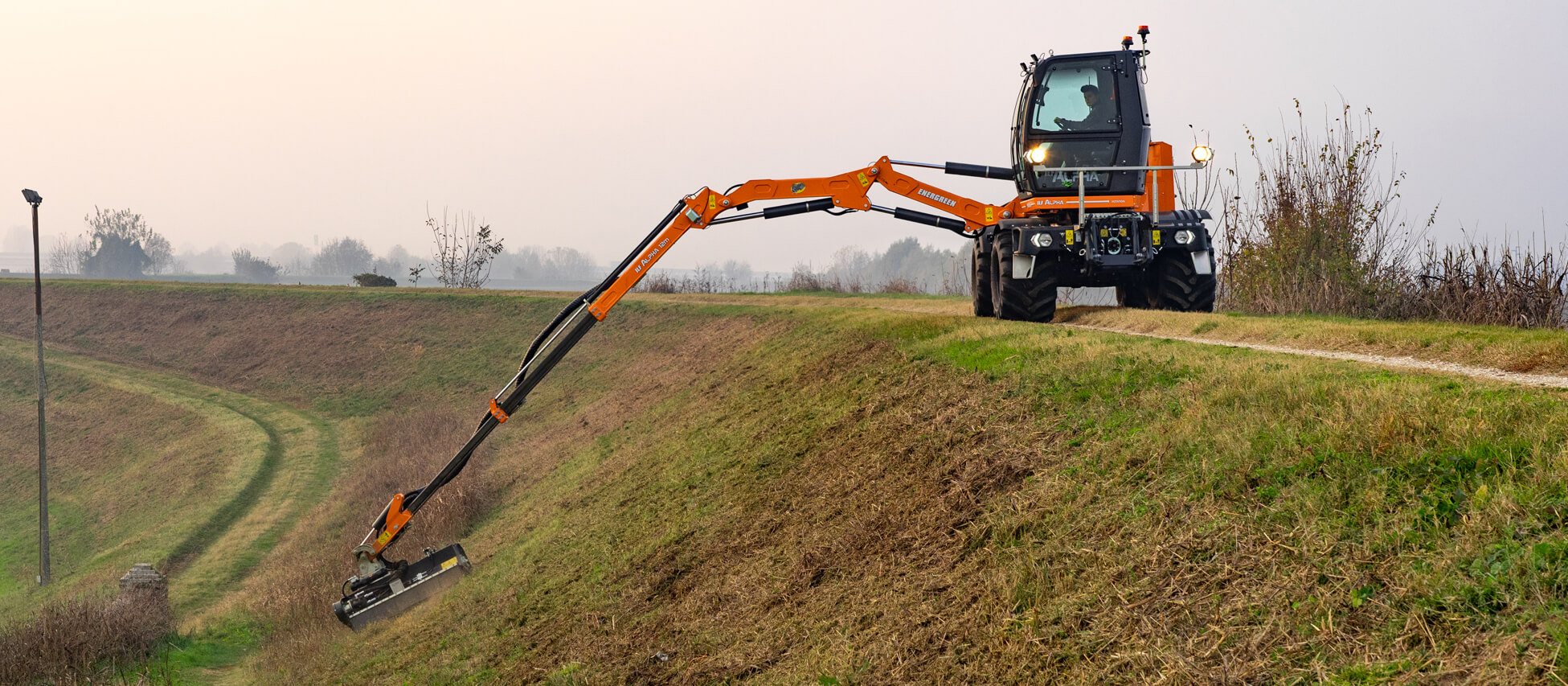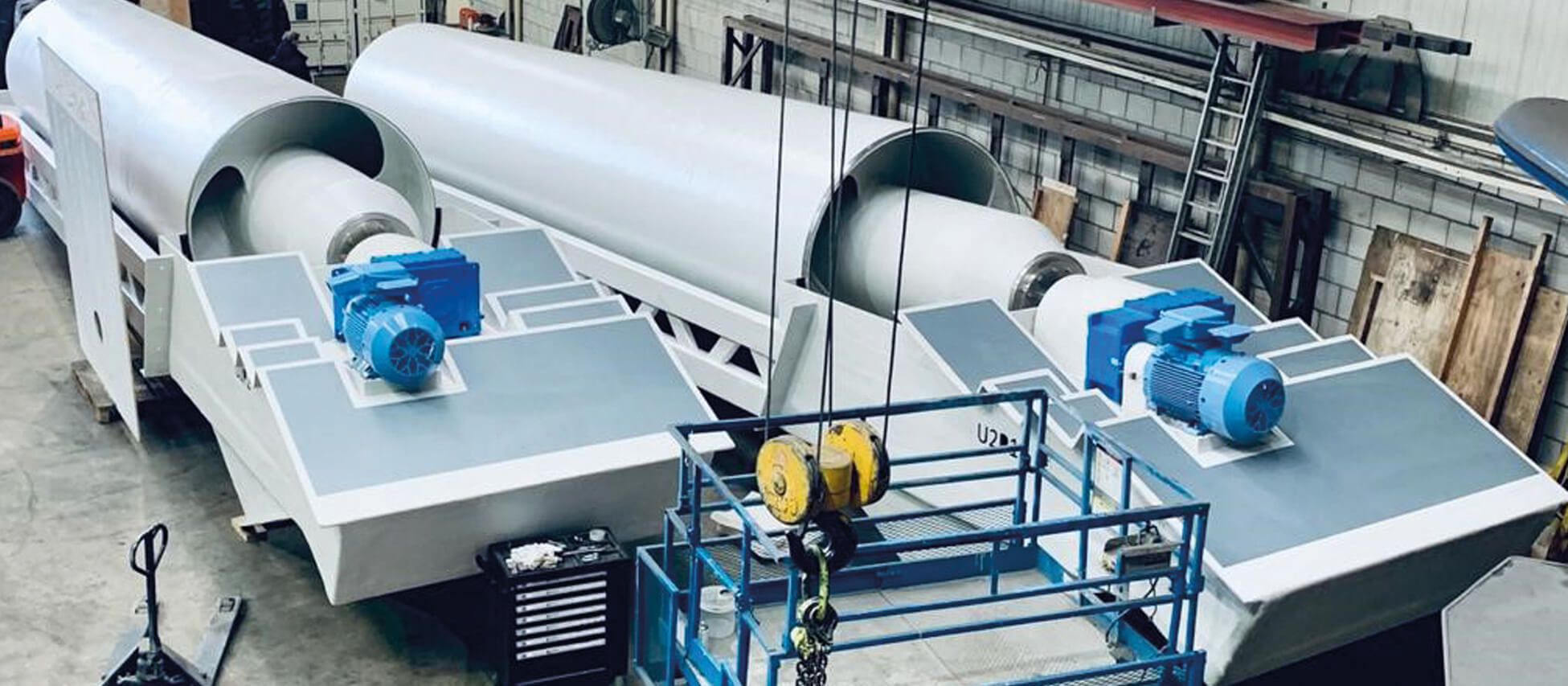JBA Bentley delivers new pumping station for Derby City Council
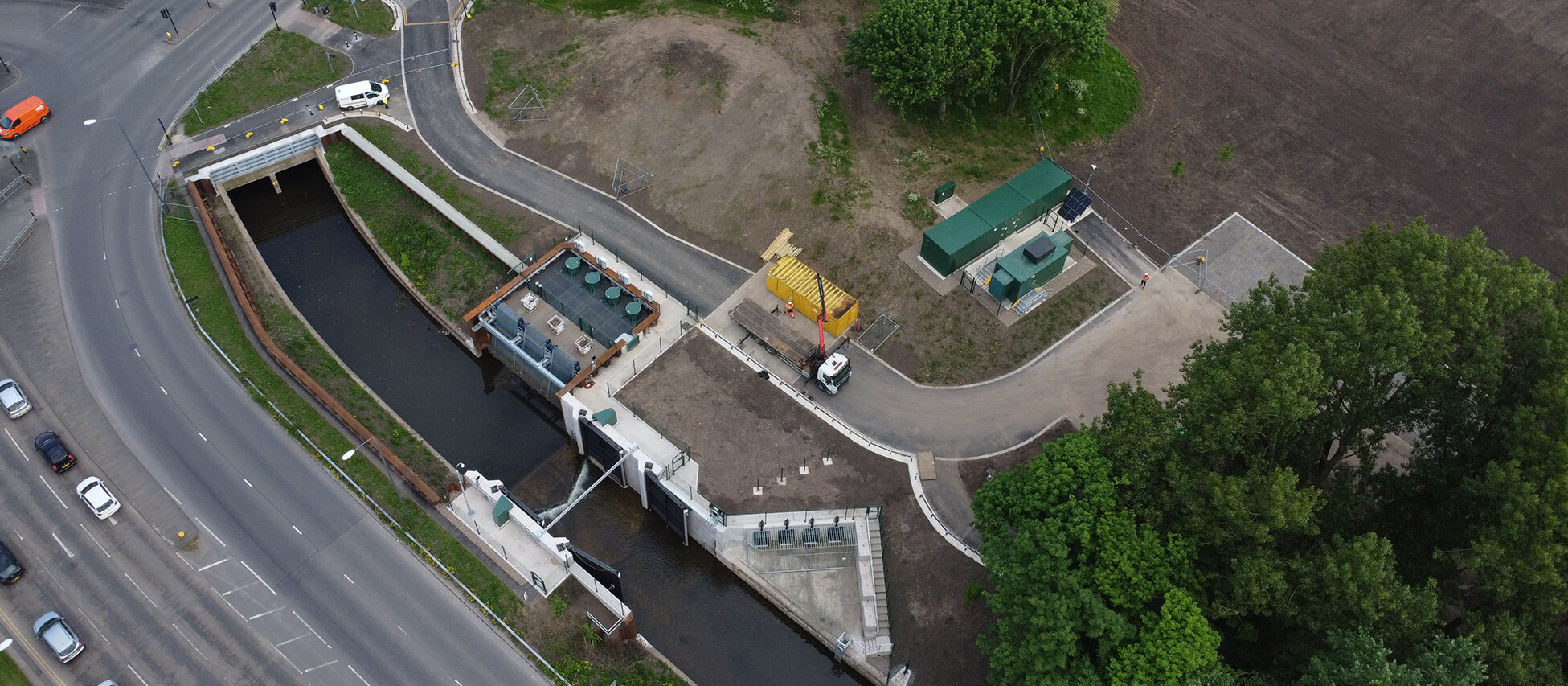
JN Bentley has vast experience in building and refurbishing pumping stations, working with several clients in the water and environmental sector through long-term framework arrangements.
Delivering as JBA Bentley – our design and build (D&B) venture with Jeremy Benn Associates – we recently completed ‘Project Munio’ – the D&B of Mill Fleam Pumping Station with Derby City Council. The works included the installation of two large hydraulic lock gates, sheet piled river walls, a fish refuge area and a new pumping station capable of passing forward flows of 4,500 litres per second.
The project was extremely challenging given its space-constrained city centre location and tight-timescales for completion. The site is located within a public park, with precious fauna and flora, including bats, birds and aquatic life.
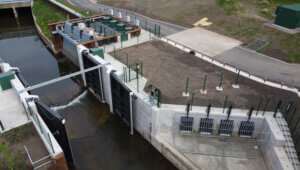 As the project had potential to generate significant embodied and operational carbon, the team focussed on stripping carbon, using carbon modelling tools to assess the real-time impact of design changes and carbon hotspots, removing c. 100 T/Co2e from the solution. High efficiency pumps and variable speed drives optimised the pumps operations to minimise power demand requirements.
As the project had potential to generate significant embodied and operational carbon, the team focussed on stripping carbon, using carbon modelling tools to assess the real-time impact of design changes and carbon hotspots, removing c. 100 T/Co2e from the solution. High efficiency pumps and variable speed drives optimised the pumps operations to minimise power demand requirements.
Through the creation of a new fish refuge area, the installation of fish friendly pumps with allowances made for fish passage within the flood gate design, the solution has taken measures to improve fish and river life. Several other provisions were made to manage environmental and ecological sensitivities in delivery.
The project embraced modern methods of construction and digital technology to ensure timely ‘right first time’ delivery. As the scheme was mobilised during the coronavirus pandemic, the fully-integrated D&B team co-ordinated complex engineering interfaces using Miro as an effective platform for remote collaborate planning. By using 3D modelling and design, this enabled digital planning using ‘digital rehearsal’ – a 3D platform that allows all stakeholders to review the solution and optimise safety, operation and the sequencing of works through virtual site walkthroughs.
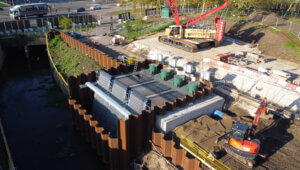 Prior to construction, the team used augmented reality (AR) technology to visualise the 3D design on sit. This helped with planning and further assessments of buildability, with the team able to overlay sub-surface services to identify any potential clashes.
Prior to construction, the team used augmented reality (AR) technology to visualise the 3D design on sit. This helped with planning and further assessments of buildability, with the team able to overlay sub-surface services to identify any potential clashes.
Given the time and space constraints, the team sought to complete as much work off-site as possible. The standby generator was configured off-site to permit ‘plug & play’ installation, with all components fully tested and commissioned prior to landing on site. Furthermore, the pile caps, cladding panels and access stairs for the works were manufactured off-site using 3D concrete printing technology. Factory assured quality products were quick and easy to install, whilst minimising waste, time and carbon.
Through diligent planning and innovation, including the use of AR technology, 3D models for design and build, off-site and factory manufactured products – delivered in truly collaborative way, the pumping station was operational by December 2022.


